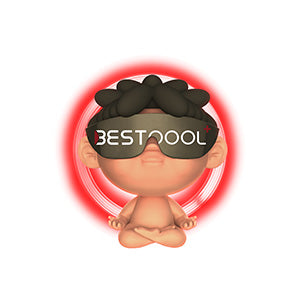Introduction to the Challenges of Newborn Sleep:
Sleep plays an extremely important role in the growth of newborns. A good night's sleep not only contributes to the physical development of newborns but also promotes the maturation of their nervous system and emotional stability. However, newborns not getting enough sleep is a problem every new parent must face.
The problem of day and night reversal in the first few months of life is a challenge for many new parents, usually because the baby's biological clock is not yet fully established. Understanding your baby's sleep patterns is crucial. Two-month-old babies typically need 14 to 17 hours of sleep daily, spread between nighttime and multiple daytime periods. Their rapid eye movement (REM) sleep cycle is much shorter than that of adults, so they wake up more often. In addition, two-month-old babies begin to exhibit more arousal behaviors through body movements, voices, and facial expressions.
Solving this problem requires parental patience and some effective strategies. This article will introduce you to the addition of red light therapy for improving newborns' sleep routines so that you can create a comfortable and safe sleeping environment for your baby.

The Science of Red Light Therapy and Circadian Rhythms:
Red light therapy has been deemed a novel modality in regulating circadian rhythms for neonates. Circadian rhythms are the natural, internal processes that run repeating cycles of alertness and sleep. A human's circadian rhythm cycle is just over 24 hours long and is mainly determined by light and darkness within the environment. Red light therapy includes exposure to wavelengths of light in the red and near-infrared part of the spectrum. Such wavelengths are designed to signal the brain to transition from alert to lights-out mode smoothly and safely without interrupting normal circadian rhythms.
Blue and white light reduce the production of melatonin, a hormone that allows our body to realize it is time to rest. Red light does not decrease the production of melatonin; rather, it promotes the secretion of melatonin, which helps regulate the sleep-wake cycle.
The red light is non-invasive and safe compared to the blue light, which is in screens and most artificial light. This is one of the reasons it makes an ideal pick for use at night, as it doesn't tamper with the body's everyday functioning, which usually prompts melatonin production at night.
Syncing the circadian clocks of newborns
The infant remains awake most of the night and sleeps during the day simply because their circadian rhythms are undeveloped, and they cannot distinguish between day and night. Introducing red light into the night routine will give a newborn an important natural signal to sleep. Red light therapy could help infants with reversed days and nights sleep by inducing soothing sleep.
Addressing Newborn's sleep issues
- Red light therapy at night creates a quieting routine for the child based on a natural cue-sleep. Consistently using red light before bedtime allows the baby to begin associating sleep time with soothing red light.
- Using red light in the evening helps move your baby's sleep pattern and gradually synchronize it with the natural day-night cycles. Over time, this should help your child both to sleep longer periods at night and to wake less during the night.
- Getting out into the natural daylight helps distinguish the day from the night. Red-light therapy also helps to make the difference in light, and that difference contributes to the natural sleeping-waking cycle.

Melatonin Production and Red Light Therapy:
Melatonin is the hormone in charge of the sleep-wake cycle. Also, it is a relaxant hormone facilitated by the production of light. It, therefore, enhances melatonin production at a more regular concentration without interference with natural rhythm and, thus, is safe for use even at night. For infants, it sets up good sleep patterns, such that the baby takes a shorter time to fall asleep, the number of awakenings is few, and the duration of sleep is prolonged.
Practical Tips for Integrating Red Light Therapy into Bedtime Routines:
- Start red light therapy 2 hours before bedtime.
- Do use red light therapy with variable brightness. Ensure it is set to low but strong enough to work, and ensure no light is shining at the baby's eyes.
- Make the place quiet to allow for no loud noise and with less distraction; the use of soft or ambient sounds can be integrated.
Pairing Red Light Therapy with Soothing Bedtime Activities:
Red light therapy should be done before soothing routines: a bath, gentle rocking, and a quiet bedtime story. Everything should be consistent to promote sleep cues. Prevent the baby from doing physical exercises and screens in the last hour before bed. Keep all lights low in the evening, with red light as the primary light source, until the bedtime routine.
Real-World Success Stories and Expert Endorsements:
As a result of red light therapy, many newborns get peaceful sleep, which significantly lightens up the situation for many parents. For example, one mother of a 3-month-old baby said that after undergoing many red light therapy sessions, the baby began to fall asleep quickly and slept the whole night. Furthermore, her 2-month-old baby started waking up much less at night since red light has a soothing effect.
Some even recommend giving babies red lights to maximize a child's sleep. The sleep practitioner for children, Dr. Sarah Mitchell, was in agreement with the use of red lights. She indicated that it would aid circadian function without interference with melatonin development. A paper in the Journal of Clinical Sleep Medicine similarly concluded that the application of red light results in significantly improved sleep with a positive effect on melatonin production among small children. All these experiences and opinions of experts agree to underline the potential of red light therapy as a valuable tool in establishing healthy sleep patterns among newborns.
Conclusion:
Bedtime red light therapy has its advantages for the newborn baby. It helps raise melatonin levels, making it easier to fall asleep and enhancing the length of their sleep time. It would be good to visit a pediatrician if sound sleep patterns do not return after trying these methods. Sleep can be impaired by several health conditions that should also have proper personal and treatment aspects under pediatric follow-up control: gastroesophageal reflux and allergies. Day-night reversal requires much patience and overnight persistence. With persistence and the right approach for the baby and family, enhanced sleep can be obtained. Adequate rest is essential for a growing, developing, and well-being baby; thus, it will enable parents to function and rest, too. This way, parents will build a happier and healthier family dynamic when trying to get their baby to sleep well.
References
[1] Barbeau, D. Y., & Weiss, M. D. (2017). Sleep Disturbances in Newborns. Children (Basel, Switzerland), 4(10), 90. https://doi.org/10.3390/children4100090
[2] Field T. (2017). Infant sleep problems and interventions: A review. Infant behavior & development, 47, 40–53. https://doi.org/10.1016/j.infbeh.2017.02.002
[3] Kaneshi, Y., Ohta, H., Morioka, K., Hayasaka, I., Uzuki, Y., Akimoto, T., Moriichi, A., Nakagawa, M., Oishi, Y., Wakamatsu, H., Honma, N., Suma, H., Sakashita, R., Tsujimura, S., Higuchi, S., Shimokawara, M., Cho, K., & Minakami, H. (2016). Influence of light exposure at nighttime on sleep development and body growth of preterm infants. Scientific reports, 6, 21680. https://doi.org/10.1038/srep21680
[4] Shirani, A., & St Louis, E. K. (2009). Illuminating rationale and uses for light therapy. Journal of clinical sleep medicine : JCSM : official publication of the American Academy of Sleep Medicine, 5(2), 155–163.
Read More
- Red Light Therapy| Improve Sleep & Wellness – BESTQOOL
- Red Light Therapy | Unlock Wellness & Beauty Benefits – BESTQOOL
- Red Light Therapy Dosing Guide – BESTQOOL
- How To Create A Sleeping Routine For Newborns – BESTQOOL
- Red Light Therapy for Lyme Disease: Managing Symptoms and Enhancing Re – BESTQOOL














 Small
Small

 Moderate
Moderate

 Moderate
Moderate

 Moderate
Moderate

 Full
Full



